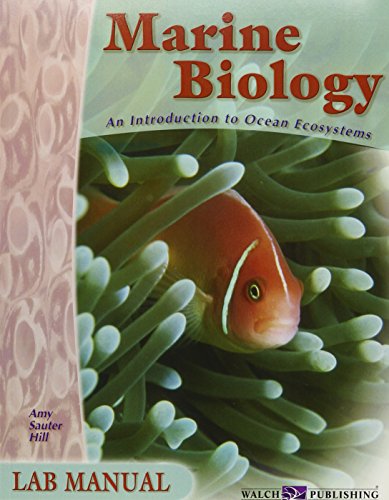-
Find the Errors!: Proofreading Activities
Nancy Lobb
Paperback (J Weston Walch, Jan. 1, 1998)The fun way to improve writing skills!Middle school students will enjoy this engaging introduction to proofreading. Each lesson is a short, humorous anecdote or letter, or crossword puzzle riddled with errors. It s up to your students to identify and notate the mistakes. Focuses on spelling, capitalization, punctuation, sentence structure, and style. 37 fun-filled lessons Extensive teacher support includes grammatical rules, answer keys, additional activities, and tests for easy assessment
-
Reading and Writing Poetry With Teenagers
Fredric Lown, Judith W. Steinbergh
Paperback (J Weston Walch, June 1, 1996)This versatile volume combines examples of poetry from historical and contemporary masters with high school writing. Each chapter contains poems for reading aloud, poems for discussion, models for writing exercises, samples of student poems, and a bibliography for extended reading. Many teachers use Reading and Writing Poetry with Teenagers across disciplines. Writing exercises include: Animals as Symbols Family Portraits in Words Of War and Peace Writing Song Lyrics as an Expression of Social Protest
-
Marine Biology: An Introduction to Ocean Ecosystems
Amy Hill
Paperback (J Weston Walch, March 1, 2002)An Introduction to Ocean Ecosystems Explores a variety of marine ecosystems and organisms Builds critical-thinking, science process, and problem-solving skills Engages student interest with easy-to-understand explanations and vivid, full-color photographs Printed in full color and includes dozens of marine biology photographs
-
Living on Your Own : An Independent Living Simulation: Activity Text
Jean Bunnell
Paperback (J Weston Walch, March 16, 2001)An Independent Living SimulationLiving on Your Own helps your students experience independent living all in the safety and comfort of the classroom. They ll get acquainted with the new towns they re living in, then find jobs, learn about the public transportation system, find housing, make budgets, and pay for food and utilities. Each easy-to-read-and-understand activity features daily lesson plans, reproducibles, and answer keys. The program occupies 12 weeks, but the pace can be modified so the activities can be conducted at an appropriate rate for your students.
-
Math In Everyday Life: Teacher Guide
David E. Newton
Paperback (J. Weston Walch, Jan. 1, 2001)Math In Everyday Life Teacher Guide
-
Short Lessons in Art History: Exercises and Activities
Phyllis C. Barker
Paperback (J Weston Walch, June 1, 2002)A novel way to engage art or art history students. The companion guide to Short Lessons in Art History: Artists and Their Work, this lively volume features separate chapters on 35 European and American masters, showcasing a variety of activities, questions, and projects concerning the artists and their work. For Botticelli, for example, choose from multiple choice questions, short answer questions, a writing project, and an art project. For Raphael, figure out the anagrams related to his life. For El Greco, work on a word puzzle. For Winslow Homer, paint or draw the sea and sky. For Andrew Wyeth, solve a crossword puzzle. For Picasso, construct a collage. Included are an answer key and suggestions for additional projects. For students who learn in different ways, this combination of traditional assessments and art-making projects opens the door to reinforcing knowledge and self-expression.
-
Geographic Literacy: Maps for Memorization
Pat Rischar Davis
Paperback (J. Weston Walch, Aug. 16, 2001)Pairs of reproducible maps - one map labeled, the other map blank - help students learn and remember the locations of countries, capitals, and important physical features. Lessons are organized into 11 regions, namely Canada, the U.S., and Greenland; Latin America; Western Europe; Eastern Europe; Northern Eurasia; Southwest Asia; Africa; South Asia; Central and East Asia; Southeast Asia; and Australia and Oceania. Each regional unit includes labeled physical and political maps, blank physical and political maps, a word list of features/countries, and a map test with answer key. Grades 5-12. JWW789.
-
The Math of Sports: Integrating Math in the Real World
Hope Martin, Susan Guengerich
Paperback (J Weston Walch, Oct. 1, 2000)Math in the Real World T
T
-
Power Basics: American Government
Robert Taggart
Perfect Paperback (J. Weston Walch, March 15, 2005)Designed for use in differentiated classrooms, this integrated curriculum unit uses simple language to deliver core content supportive of NCSS standards. Key learnings: government organization (all levels), development of American democracy, the election process, how court decisions have shaped government. Reading level: grade 4. Interest level: grades 6-12. JWW282.
-
Marine Biology: An Introduction To Ocean Ecosystems
Amy Hill
Paperback (J Weston Walch, March 1, 2002)An Introduction to Ocean Ecosystems Explores a variety of marine ecosystems and organisms Builds critical-thinking, science process, and problem-solving skills Engages student interest with easy-to-understand explanations and vivid, full-color photographs Printed in full color and includes dozens of marine biology photographs
-
45 Profiles in Modern Music
E. Richard Churchill, Linda R. Churchill
Paperback (J Weston Walch, June 30, 1996)45 Profiles in Modern Music (Blackline masters)
-
Where on Earth?: Understanding Latitude and Longitude
Robert A. Rutherford
Paperback (J Weston Walch, June 1, 1989)For many students, understanding the basics of latitude and longitude is a challenge that limits their ability to comprehend and synthesize geographical information. Where on Earth? is a valuable resource that addresses this issue, with seven engaging lessons.The seven skill-sequenced lessons include reproducible student reading material, diagrams, vocabulary exercises, activities, worksheets, and maps. Building skill upon skill, students read about key concepts, then use grids and maps to develop an understanding of latitude and longitude. Detailed teaching suggestions, tests, and answer keys are included.Topics include:How grid lines measure,What is latitude?Mercator maps,Elliptical maps...and many more. Developed by a geography teacher, Where on Earth? is a classroom-tested approach that works.